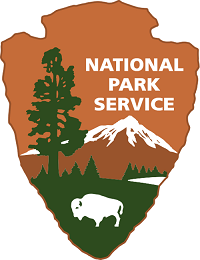
The National Park Service (NPS) is investing $29 million in 81 individual energy efficiency and water conservation projects at national parks throughout the greater Washington region. This unprecedented commitment to reducing energy use and generating energy from renewable sources is the largest to-date among the nine bureaus in the Department of the Interior.
The 23-year Energy Savings Performance Contract (ESPC) awarded at the end of September to Siemens Government Technologies, will allow the NPS to conserve energy and water with no upfront costs and to accrue cost savings into the future. The project is funded by savings generated through the new energy conservation measures. Savings are guaranteed by Siemens and will allow NPS to advance President Obama’s vision that federal facilities generate 20 percent of their energy from renewable sources by 2020.
“The National Park Service is committed to managing the future health and sustainability of our national parks proactively through this kind of ambitious energy and resource conservation program,” NPS Director Jonathan B. Jarvis said. “The parks in the greater Washington region involved in this effort are demonstrating the kind of leadership that other parks and public lands across the country can follow to reduce our carbon footprint, energy consumption, and water usage.”
“The National Park Service’s mission to preserve our country’s natural and historic treasures also requires us to be responsible stewards of our planet’s resources and of Americans’ tax dollars,” acting Regional Director Lisa Mendelson-Ielmini said. “As we approach our centennial in 2016, we are committed to employing the best science and industry practices, and this energy savings contract provides a creative way to accomplish our goals.”
The new energy conservation measures will allow 13 D.C. area national parks to make significant reductions in Greenhouse Gas emissions and Carbon Footprint, water and energy consumption and deferred maintenance backlogs. Greater efficiency will reduce carbon dioxide emissions by more than 4,000 tons each year, reduce water usage by 74 million gallons each year and reduce energy use by nearly 20,000 MBtus each year.
Specific projects include installing intelligent lighting and water controls that regulate themselves to be most effective and efficient for the conditions, replacing outdated and high energy use heating and air conditioning systems and installing photovoltaic solar arrays. Project installation is expected to begin in January 2015.
Project Examples:
National Mall and Memorial Parks: Park staff will know instantly when a light bulb burns out along the National Mall. Intelligent lighting systems with remote monitoring capabilities will not only allow the park to know when a new light bulb is needed, but also will smartly adjust to natural lighting conditions. New energy efficient lights will help the National Mall reduce energy use by 13 percent in the first year.
President’s Park: Sprinklers on the White House Ellipse in President’s Park will now only turn on when the grass needs water. Intelligent remotely monitored sensors will substantially reduce water use making irrigation more efficient and sustainable. In the first year of the new energy conservation measures, President’s Park will reduce its energy use by 36 percent.
Monocacy National Battlefield: The sun will provide all the energy needed to power the visitor center at Monocacy National Battlefield. A photovoltaic system of solar panels will be installed on the visitor center’s roof helping the park reduce its energy use by 30 percent in year one. Park rangers will be able to use the solar panels to educate visitors about climate change and renewable energy.
Wolf Trap National Park for the Performing Arts: Intelligent lighting systems and energy-efficient bulbs will be installed at the Filene Center. The lights are designed to match the ambience and historic feel of the amphitheatre. All told, projects like this at Wolf Trap will help the park reduce its energy consumption by 15 percent in the first year.
Participating Parks:
- Antietam National Battlefield (Md.)
- Catoctin Mountain Park (Md.)
- Chesapeake and Ohio Canal National Historical Park (DC, Md., Va.)
- Harpers Ferry National Historical Park (WVa., Va., Md.)
- Manassas National Battlefield Park (Va.)
- Monocacy National Battlefield (Md.)
- National Capital Parks- East (DC, Md.)
- National Mall and Memorial Parks (DC)
- George Washington Memorial Parkway (DC, Md., Va.)
- President’s Park (DC)
- Prince William Forest Park (Va.)
- Rock Creek Park (DC)
- Wolf Trap National Park for the Performing Arts (Va.)
Contact:
Jenny Anzelmo-Sarles, jenny_anzelmo-sarles@nps.gov 202-619-7177
Logo courtesy National Park Service
 Your Privacy Choices
Your Privacy Choices
 The
The